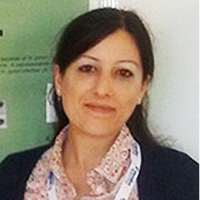Publish with Us
Mathematics & Physics Group
International Journal of Physics Research and Applications- ISSN:2766-2748 IJPRA
Chemistry Group
Biology Group
Annals of Proteomics and Bioinformatics- ISSN:2640-2831 APB
Archives of Biotechnology and Biomedicine- ISSN:2639-6777 ABB
Insights in Biology and Medicine- ISSN:2639-6769 IBM
Journal of Forensic Science and Research- ISSN:2575-0186 JFSR
Journal of Plant Science and Phytopathology- ISSN:2575-0135 JPSP
Pharma Group
Engineering Group
Clinical Group
Medical Group
blood flow restriction
Search by University/Institution
Enter your University/Institution to find colleagues at HSPI.
Ensuring author's satisfaction with
- Friendly and hassle-free publication process
- Less production time of articles
- Constructive peer-review
- Enhancing journal reputation
- Regular feedback system
- Quick response to authors' queries
Most Viewed Keywords
Search Articles by Country
Get all latest articles in all Heighten Science Publications Inc journals by country.
Testmonials
![]()
The services of the journal were excellent. The most important thing for an author is the speed of the peer review which was really fast here. They returned in a few days and immediately replied all o...
Zehra Guchan TOPCU
![]()
I do appreciate for your service including submission, analysis, review, editorial and publishing process. I believe these esteemed journal enlighten the science with its high-quality personel.
Bora Uysal
![]()
We appreciate your approach to scholars and will encourage you to collaborate with your organization, which includes interesting and different medical journals. With the best wishes of success, creat...
Nataliya Kitsera
![]()
We thank to the heighten science family, who speed up the publication of our article and provide every support.
Mehmet Besir
![]()
I was very pleased with the quick editorial process. We are sure that our paper will have great visibility, among other things due to its open access. We believe in science accessible to all.
Anderson Fernando de Souza
![]()
Thank you and your company for effective support of authors which are very much dependable on the funds gambling for science in the different countries of our huge and unpredictable world. We are doin...
Victor V Apollonov
![]()
Your big support from researchers around the world is the best appreciation from your scientific teams. We believe that there should be no barrier in science and you make it real and this motto come ...
Arefhosseinir Rafi
![]()
Your service is very good and fast reply, Also your service understand our situation and support us to publication our articles.
Ayman M Abu Mustafa
![]()
During the process your positive communication, prompt feedback and professional approach is very highly appreciated. We would like to thank you very much for your support.
Can Vuran
![]()
Publishing with the International Journal of Clinical and Experimental Ophthalmology was a rewarding experience as review process was thorough and brisk. Their visibility online is second to none as t...
Dr. Elizabeth A Awoyesuku
HSPI: We're glad you're here. Please click "create a new Query" if you are a new visitor to our website and need further information from us.
If you are already a member of our network and need to keep track of any developments regarding a question you have already submitted, click "take me to my Query."



